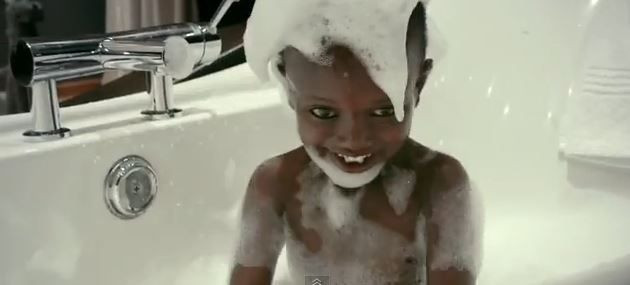Kenyan Boy, Nkaitole, Raises Awareness Of Global Need For Safe Drinking Water By Sharing His Bucket List [VIDEO]

By 2025, half of the world’s population will be living in water-stressed areas.
Currently, 780 million people worldwide lack access to clean water and 6,500 people will die because of it...today. Among these deaths, 4,100 will be children.
In the Kenyan village of Amoboseli, one out of every five children dies before reaching the age of five because of unsafe drinking water. Contaminated water transmits communicable diseases, including diarrhoea, cholera, dysentery, typhoid, and guinea worm infection. To raise awareness of this issue, Water is Life, an organization devoted to bringing water to those in need, helped one child who lives in the village both create and videotape a ‘bucket list’ of things he’d like to do before he dies. Nkaitole has reached the ripe old age of four.
Intended to stir and inspire an audience unfamiliar with the issue of unsafe water, the video tracks Nkaitole as he flies in an airplane, drives a race car, travels outside his village for the first time, and runs along a beach. Although the small and handsome boy does not appear to understand why he is performing these feats, he clearly enjoys himself while also making the point that he and many others like him may never live long enough to celebrate a fifth birthday. Watch the video below, or here.
Water Facts
The mission of Water is Life is to provide clean drinking water, sanitation, and WASH (Water, Sanitation, And Hygiene) education programs to schools and villages in developing countries. According to the organization’s website, their work and its results change everything.
"Hours are restored each day — women can use their time to learn a trade, start a business, and receive an income," states the website. "Children can receive an education. Clean water will reduce sickness by almost a third. Clean water saves and transforms lives, and communities.” The organization also offers opportunities for others to be involved through fundraising and field project implementation.
The good news is that not all iis bleak when considering this issue. For instance, between 1990 and 2010, two billion people gained access to improved drinking water sources and 1.8 billion people gained access to improved sanitation facilities, according to the World Health Organization.
Yet, the number of cholera cases for the decade ending in 2010 increased by 130 percent. Because only 63 percent of the global population currently has access to toilets and other improved sanitation facilities, the risk from cholera will likely increase worldwide as the number of people living in slums and refugee camps swells.
Published by Medicaldaily.com



























